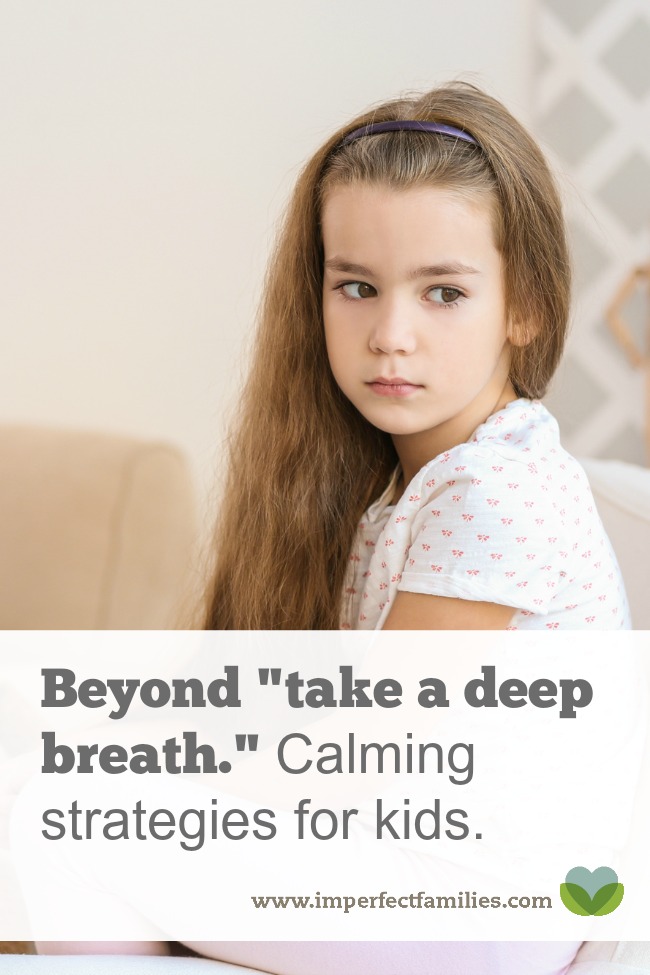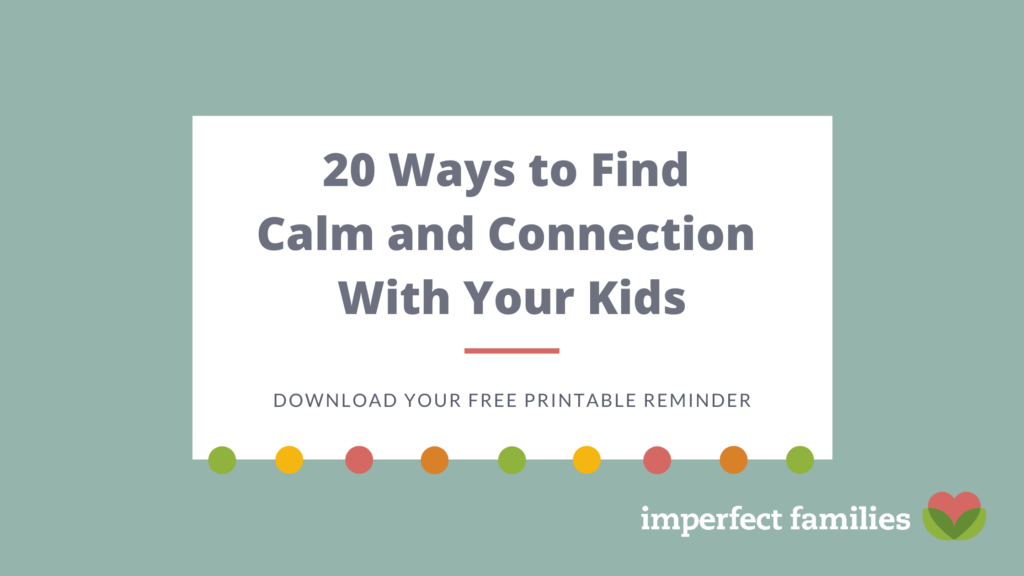
This page contains affiliate links. Using these links, I earn a small commission at no additional cost to you.
Your son is worried again.
He doesn’t want to go to school tomorrow. He says he thinks he’s getting sick.
You’ve been here before.
You feel helpless and overwhelmed, not sure how to help your anxious child.
You encourage him to “take a deep breath,” but he refuses, saying “it doesn’t help!”
Going Beyond “Take a Deep Breath”
Deep breathing is great, but sometimes, your child needs another option. Or ten other options.
One of the best ways to manage anxious feelings is by having a huge list of coping skills and strategies to try. With time and practice, your child will find a few that work well and some that don’t work at all.
More Calming Ideas
- Put a basket of Kimochi’s on the counter. Ask your child to pick what they are feeling out of the basket.
- Hang a page with feeling faces on the refrigerator or bedroom door. Ask your child to circle or point to what they are feeling.
- Allow for creative expression. Set out crayons and paper or a notebook and pen, encourage scribbling, note writing or drawing (Some teens still like to color too!)
- Download a relaxation CD onto their iPod or iPad. Encourage them to go to a quiet place in the house and listen for a few minutes.
- Create a calming spot in the house. Make it a normal part of the day to visit the calming spot to relax or recharge.
- Have fidgets available. Play-dough, slinkies, tangle or koosh balls are all great for a child who needs to keep their hands busy.
- Model deep breathing throughout the day. Say out loud, “I’m going to take a deep breath,” use bubbles, balloons, candles or a pinwheel to make it fun.
- Make relaxation part of the routine. Let your child pick out a favorite bubble bath scent, include back rubs or hair brushing into the pre-bedtime ritual.
- Get moving. Go outside, run around, go to a park, swim or play catch. Enroll your child in activities that give them opportunities for movement.
- Let feelings be feelings. Rather than minimize or discourage your child from expressing their feelings, normalize them by saying, “you look angry right now” or “you seem really worried about that test tomorrow.”
- Read a great book. While there are many good authors, Freeing Your Child from Anxiety by Tamar Chansky is a wonderful resource for parents.
Practice When Your Child Is Calm
Rather than wait for the next anxiety crisis, start practicing calming strategies today!
Explain to your child that their brain is amazing. The more they practice using calming strategies, the easier it will be for their brain and body to remember what it feels like to be calm. This will help them get back to a calm brain and calm body faster next time they are worried or anxious.
It’s OK to Seek Help
These tips may not help every child overcome their anxiety. If your child continues to struggle with their worries, it may be best to seek help from a mental health professional. A therapist can work with you and your child and suggest more tips and strategies to manage and overcome anxiety.



Comments have been turned off to retain the privacy of all families. If you have a question or comment on the topic, you're always welcome to contact me.